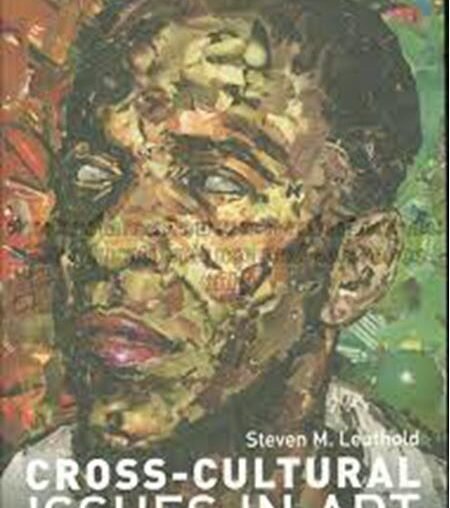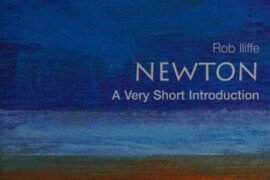2020학년도 한양대 인문계 A형
38-40<빈칸추론, 부분이해, 내용일치>
다음 글을 읽고 물음에 답하시오.
It is one thing to acknowledge the poles of the universal and relative for analytical purposes; it is another to acknowledge them for questions of value. We may understand the primitive as intrinsically “better” than more complex cultures because the primitive is close to the essence of human experience. Or we may understand the primitive as “inferior” to complex cultures because it is lacking in technological progress. This contradiction in valuative terms points to the modem experience of primitivism. In contrast to the objective detachment associated with cultural relativism, the comparative process points out the valuative dimensions of judgment that _________ cultural boundaries. Sometimes, these dimensions are referred to as normative because they imply standards (norms) that artworks ought to meet in order to be valued as exhibiting high quality. Are there standards of quality that apply cross culturally in any way?
This idea―that there are cross-cultural dimensions that we use to understand, and judge, artistic experience―can be seen in the process of implementing standards of artistic quality. From the perspective of cultural relativism, the idea that quality can be defined and applied cross culturally is highly troubling. In culturally relative schemata, standards of quality are defined and experienced according to the internal dynamics of a culture. A decentralizing of judgments of artistic quality is thus called for.
However, every day curators and collectors make judgments about the quality or importance of artworks produced in other cultures. Often, the judgments are made in the process of selection: what should or should not be included in a show or collection? A position of radical relativism seems to ignore the intercultural processes of aesthetic judgment that take place in practice every day. The standards used to judge quality may vary, and even come into conflict with one another, but the judgment of quality in the contemporary world is often an intercultural process.
38. 빈칸에 들어갈 가장 적절한 것은?
① delimit ② establish
③ cut across ④ go beyond
⑤ impinge on
39. 밑줄 친 “A decentralizing of judgments of artistic quality”의 의미로 가장 적절한 것은?
① experiencing arts cross-culturally
② democratizing cultural exchanges
③ confirming intercultural qualitative judgments
④ highlighting artistic quality unique to a culture
⑤ understanding aesthetic quality in valuative terms
40. 윗글의 내용과 가장 가까운 것은?
① The process of curation is rarely a cross-cultural practice.
② Cultural relativists accept normative standards of aesthetic judgment.
③ Identifying the internal dynamics of a culture is an intercultural process.
④ Cultural relativism defines the primitive as inferior to complex civilizations.
⑤ A comparative process of artistic judgment is shaped by cross-cultural standards.
정답 및 해설
38. 빈칸 뒤에 나오는 cultural boundaries와 짝을 이루는 동사 또는 전치사는 다음과 같다. cross cultural boundaries, across cultural boundaries, transcend cultural boundaries. 문맥상 문화적 경계를 가로지르는 것이므로 ~을 가로 질러가다 뜻의 cut across가 적절하다.
① 범위를 정하다 ② 확립하다 ④ 초과하다 ⑤ 침해하다
39. 앞문장에 ‘예술성의 기준은 문화의 내부 역학에 따라 정의하고 경험되는 문화적 상대주의’라고 한다. 선택지 가운데 문화적 상대주의를 표현한 말은 ④번이다.
밑줄 친 “A decentralizing of judgments of artistic quality”의 의미로 가장 적절한 것은?
① 비교문화적 예술 경험
② 문화교류의 민주화
③ 문화 간 예술의 질적 평가 확증
④ 어떤 문화에 고유한 예술성을 강조
⑤ 미적 예술성을 가치적 관점으로 이해
40. 예술과 문화의 관계에 대한 이해는 보편적 사고와 상대적 사고의 양극 사이의 움직임이다. 위 글은 문화적 상대주의 vs. 문화 간 비교 관점이다. 문화 간 비교 관점에서 보면 예술성은 문화를 가로질러 정의되고 적용될 수 있으므로 ⑤번이 적절하다.
윗글의 내용과 가장 가까운 것은?
① 큐레이션의 과정은 문화 간 관행이 거의 없다.
② 문화적 상대주의자들은 미적 판단의 규범적 기준을 수용한다.
③ 한 문화의 내부 역학을 식별하는 것은 문화 간 과정이다.
④ 문화적 상대주의는 원시 문명을 복잡한 문명보다 열등하다고 정의한다.
⑤ 예술적 판단의 비교 과정은 문화 간 기준에 의해 형성된다.
정답 및 해설
[해석]
분석적인 목적을 위해 보편적인 것과 상대적인 것의 양극을 인정하는 것과 가치의 문제를 위해 그것들[양극지칭]을 인정하는 것은 별개의 것이다. 우리는 원시 문화가 인간 경험의 본질에 가깝기 때문에 원시 문화가 더 복잡한 문화보다 본질적으로 “더 나은”것으로 이해할 지도 모른다. 또는 우리는 원시 문화가 기술적 진보가 부족하기 때문에 복잡한 문화보다 “열등한”것으로 이해할 수도 있다. 평가적인 측면의 이러한 모순은 원시주의의 현대적 경험을 시사한다. 문화적 상대주의와 관련된 객관적 초연함과는 대조적으로, 비교 과정은 문화적 경계를 가로지르는 판단의 가치적 차원을 시사한다. 때때로, 이러한 차원이 규범적이라 여겨지는 이유는 그것들[이러한 차원]이 예술작품이 뛰어난 예술성을 보여주는 것으로 평가되기 위해 충족해야 하는 표준(규범)을 암시하기 때문이다. 어떤 식으로든 문화 간에 적용되는 품질 기준이 있는가?
우리가 예술적 경험을 이해하고 판단하기 위해 사용하는 다른 문화 간 차원이 있다는 이러한 생각은 예술성의 기준을 구현하는 과정에서 볼 수 있다. 문화적 상재주의의 관점에서 볼 때, 예술성이 문화적으로 정의되고 적용될 수 있다는 생각은 매우 골치 아픈 일이다. 문화적으로 상대적인 도식[윤곽]에서 보면, 예술성의 기준은 문화의 내부 역학에 따라 정의되고 경험된다. 따라서 예술성에 대한 판단의 분권화가 요구된다.
그러나 매일 큐레이터와 수집가는 다른 문화에서 생산된 예술품의 예술성이나 중요성에 대해 판단한다. 종종 선택 과정에서 판단이 내려진다. 쇼나 컬렉션에 무엇이 포함되어야 하고, 포함되지 않아야 하는 것은 무엇인가? 근본적인 상대주의의 입장은 매일 실제로 일어나는 미적 판단의 문화 간 과정을 무시하는 것 같다. 예술성을 판단하는 데 사용되는 기준은 다양하고 서로 충돌할 수도 있지만 현대 세계에서 예술성에 대한 판단은 종종 문화 간 과정이다.
[어휘]
intrinsically 본질적으로
contradiction 모순
point to ~을 시사하다, 나타내다
valuative 평가하는, 평가적인
detachment 분리, 초연함
cross-cultural 비교문화적인
artistic quality 예술성
schemata 개요, 윤곽, 도식(schema)의 복수형
decentralize 분권화하다
aesthetic 심미적인







